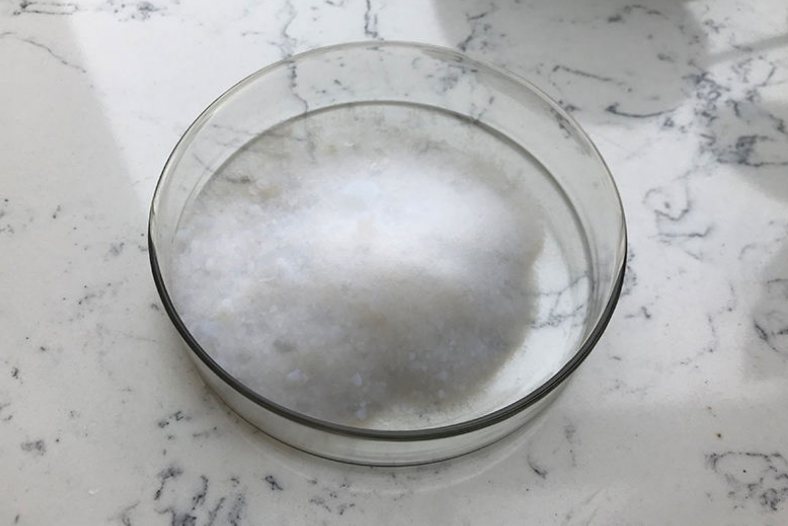Case Study: Matching Particle Size to Performance in Silica Aerogel Powder Applications
Customer Background
A European coatings company was manufacturing next-generation functional coatings and insulation mortars. They required an aerogel material with low thermal conductivity, light weight, and good dispersion. However, they were confronted with market confusion: several suppliers used terms such as "alumina-silica aerogel powder" and "silica aerogel powder" interchangeably, making it difficult to identify the correct raw material.

Customer Challenges
Product Identification Issues
The customer believed "alumina-silica aerogel powder" to be one raw material. In fact, it is a composite fibre, made by soaking and drying silica aerogel powder with an alumina-silica substrate—not a base powder.
Application-Specific Requirements
Silica aerogel powder of different particle sizes produces different surface quality, insulation values, and handling. Yet, the majority of quotations on the market did not specify the purpose or provide guidelines.
Performance and Cost Balance
The customer required a material that could meet high thermal and surface requirements for thin coatings, while also being cost-effective for large-volume applications, such as insulation mortars.
Our Solution
We provided clarity and technical guidance:
Clear Product Distinction
Only pure silica aerogel powder is available as a raw material. "Alumina-silica aerogel fibre" is a composite and processed material and not powders.
Tailored Particle Size Recommendations
- 10 μm – Best for 3C electronic coatings and thin-film applications, offering uniform dispersion and reliable thermal management.
- 15 μm – Used in premium coatings, producing a smoother and more refined surface finish.
- 30 μm – 1 mm – Standard for general coatings and fillers, balancing performance and cost.
- >1 mm – Ideal for insulation mortars, ensuring low thermal conductivity while maintaining structural strength.
Technical Advantages Delivered
- Thermal conductivity as low as 0.02 W/m·K, with very good insulation performance.
- High surface area (>600 m^2/g), with good dispersion in coatings.
- Light weight and hydrophobic, with reduced overall material weight and improved resistance to moisture.
Results & Impact
The customer selected 10 μm powder for electronic coatings and 30 μm powder for insulation applications:
Electronics Sector
Achieved consistent thin-film coating with fine dispersion.
Thermal insulation improved by ~25% compared to their previous filler materials.
Insulation Coatings & Mortars
Reduced thermal conductivity by 20–30%, while maintaining mechanical integrity.
Improved workability and reduced cracking risk during application.
Outcome
By working with us, the customer gained:
- Technical clarity – Avoided misinterpretation of raw materials on the market.
- Optimised performance – Matched the right particle sizes to the right applications.
- Cost efficiency – Reduced material wastage and achieved higher end-product performance.
- Dependable supply chain – As a U.S.-based company, we provided reliable delivery, conformance to international quality standards, and ongoing technical support.
Company Profile:
As a U.S.-based supplier of advanced materials, Stanford Advanced Materials (SAM) provides not only dependable supply of material but also the technical expertise to aid customers worldwide in realising the full potential of silica aerogels.
If you are exploring advanced aerogel solutions for coatings, electronics, or insulation applications, contact our team today to discuss the best-fit particle size and formulation for your needs.

 Bars
Bars
 Beads & Spheres
Beads & Spheres
 Bolts & Nuts
Bolts & Nuts
 Crucibles
Crucibles
 Discs
Discs
 Fibers & Fabrics
Fibers & Fabrics
 Films
Films
 Flake
Flake
 Foams
Foams
 Foil
Foil
 Granules
Granules
 Honeycombs
Honeycombs
 Ink
Ink
 Laminate
Laminate
 Lumps
Lumps
 Meshes
Meshes
 Metallised Film
Metallised Film
 Plate
Plate
 Powders
Powders
 Rod
Rod
 Sheets
Sheets
 Single Crystals
Single Crystals
 Sputtering Target
Sputtering Target
 Tubes
Tubes
 Washer
Washer
 Wires
Wires
 Converters & Calculators
Converters & Calculators
 Write for Us
Write for Us
 Chin Trento
Chin Trento



